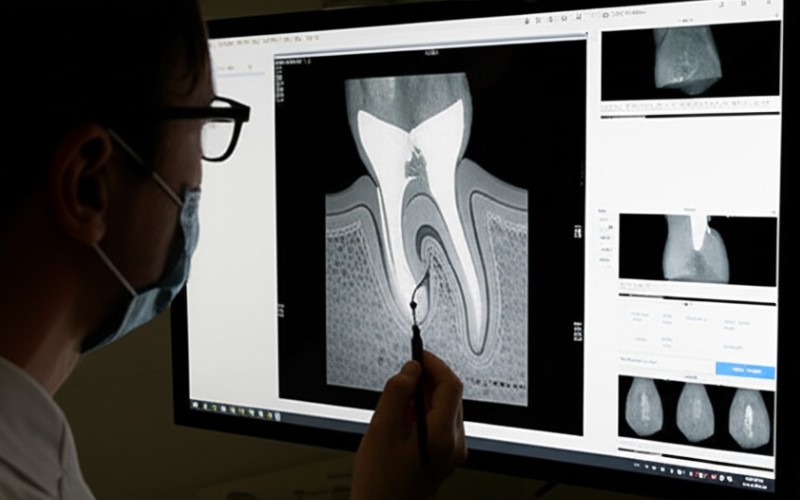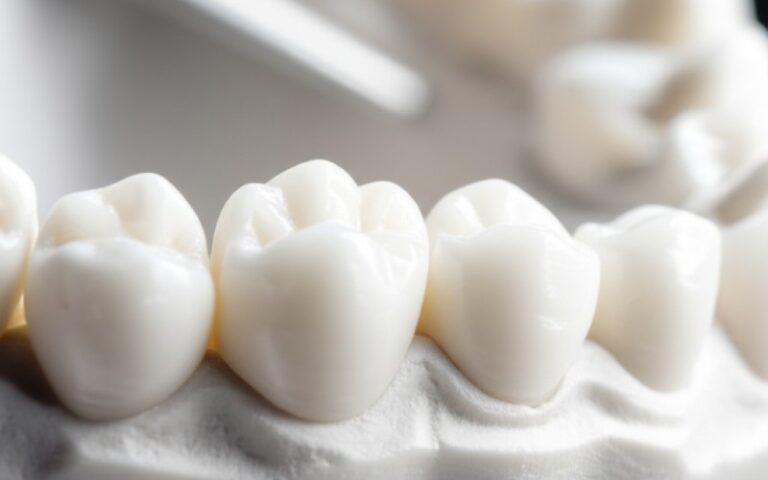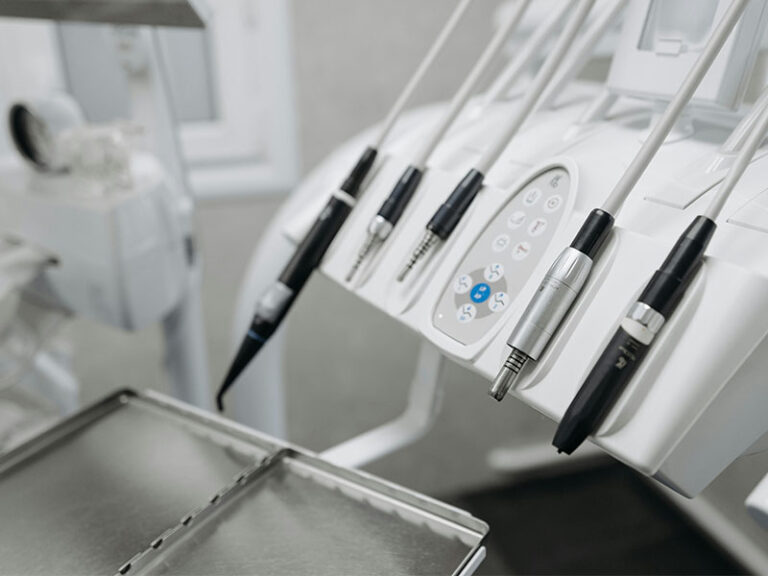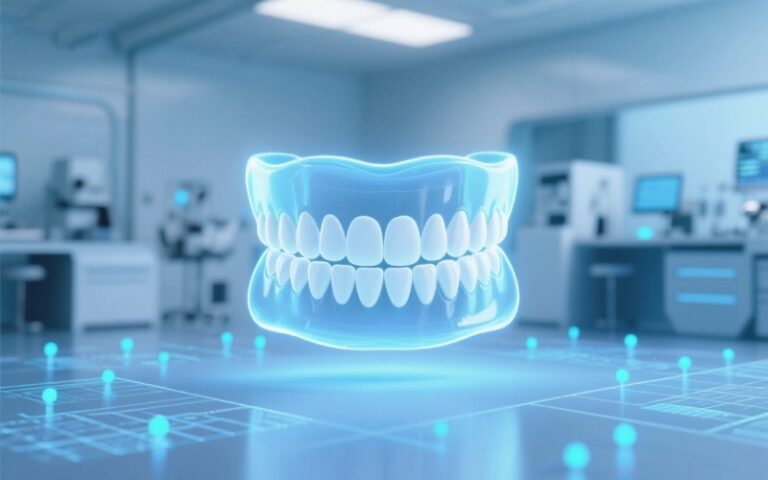
Das neue Zeitalter der Wurzelkanalbehandlung: Ein weniger invasiver Fortschritt in der Endodontie
A root canal. The words alone might make you nervous. You might picture a long, painful, and scary experience. This is a common fear. But what if I told you that this reputation is old news? Modern endodontics, the field of dentistry focused on saving teeth, has seen a huge advancement. Today’s root canal therapy is not the invasive procedure it once was. It’s a gentle, effective way to stop pain and save your natural tooth.
This article is for you if you’ve ever been scared of a root canal treatment. I want to show you the amazing progress that has been made. We will look at how this therapy is now a less invasive and often painless process. You will learn about the new tools and techniques that dentists use. This knowledge will help you feel calm and confident if you ever need this treatment. Reading this will change how you see root canal therapy forever.
Inhaltsübersicht
What Is a Root Canal, Really? An Introduction to This Dental Therapy
Let’s start with the basics for a good understanding root canal therapy. Every tooth has a soft center called the pulp. This pulp contains nerves and blood vessels. It is the living part of your tooth. When a deep cavity or an injury damages a tooth, bacteria can get inside. This can infect the pulp. A decayed or infected pulp can cause a lot of pain and lead to an abscess, which is a pocket of pus. This is where root canal therapy comes in. It is a dental therapy designed to save a tooth that is badly damaged due to decay or injury.
The main goal of this therapy is simple: remove the infection and save the tooth. If you did not get this treatment, the infection could spread. It could cause bone loss in your jaw. Eventually, you would lose the tooth entirely. The root canal process involves removing the infected pulp. Your dentist then carefully cleans and shapes the inside of the tooth. After it is clean, they fill and seal the space. The tooth is no longer alive, but it can still function like any other tooth.
This common dental procedure is a safe and highly effective treatment. It is much better than the alternative, which is often a tooth extraction. Losing a tooth can cause other teeth to shift and cause problems with biting and chewing. Choosing root canal therapy means you get to keep your natural tooth. It helps maintain your smile and your overall oral health. It is a very important tool in modern dentistry.
Why Did Root Canal Treatment Get Such a Bad Reputation?
For many years, root canals were known for being painful. This is the main reason they have a bad reputation. In the past, the tools and techniques were not as advanced as they are today. The procedures were more invasive. This means they were harder on the tooth and the patient. People often waited until their tooth pain was very bad before seeing a dentist. By that time, the infection was severe, which made the treatment more complex.
The pain people often link with root canal therapy is usually caused by the infection, not the treatment itself. The therapy is actually what relieves the pain. However, old stories get passed down. People heard from friends or family about a bad experience from decades ago. These stories created a lot of fear around this helpful dental procedure. The idea of an invasive dental treatment stuck in people’s minds.
Another issue was the lack of good anesthesia. In the past, it was harder to make sure a patient was completely numb and comfortable throughout the procedure. This could lead to a stressful and unpleasant experience. The focus was just on removing the problem, not on patient comfort. Thankfully, modern dentistry has completely changed this. The focus now is on making the root canal procedure as gentle and painless as possible.
How Has Modern Root Canal Therapy Changed with New Advancements?
The world of endodontics has gone through a revolution. The biggest advancement is the shift toward minimally invasive techniques. This is a huge change from the older, more invasive methods. The goal of a modern root canal is not just to fix the problem, but to do so while preserving as much of the natural tooth structure as possible. This makes the tooth stronger and healthier for the long term.
This advancement in therapy means the experience for you, the patient, is much better. Procedures are faster, more comfortable, and more successful. Your dentist or a specialist called an endodontist uses tools that are more precise. This precision means they only need to make a very small opening in the tooth to do their work. A less invasive approach leads to a quicker recovery. You can get back to your normal life faster.
Modern root canal therapy feels more like getting a routine filling than a major surgery. The modern advancements in technology and understanding of tooth biology have transformed this once-feared treatment. This change is a huge win for patients and for dental health. It makes saving a tooth an easy and stress-free choice. This is the new reality of root canal treatment.

What Makes a Modern Endodontics Treatment Minimally Invasive?
The term minimally invasive sounds good, but what does it really mean for your tooth? It means the dentist is focused on one thing: to preserve as much of your healthy tooth as possible. Old methods sometimes required removing a lot of the tooth’s structure to get to the infection. This could weaken the tooth over time. Today, the approach is much more delicate and targeted.
A minimally invasive root canal starts with better imaging. Dentists now use 3D scans to see the exact shape of your tooth’s roots. This lets them plan the therapy with incredible accuracy. Then, during the cleaning and shaping part of the root canal process, they use very fine, flexible tools. These tools can navigate the tiny canals inside your tooth without removing extra tooth material. The goal is to be gentle and precise, not aggressive.
This gentle approach is a core part of modern endodontics. A less invasive therapy has many benefits. It leaves your tooth stronger, which reduces the risk of it breaking in the future. It also means less discomfort and faster healing for you. By choosing to preserve the natural tooth structure, your dentist gives your tooth the best possible chance for a long and healthy life. It shows a deep respect for preserving your natural tooth.
Are Modern Root Canals Truly Painless? A Look at Pain Management
This is the big question for most people. The answer is yes, a modern root canal procedure should be a painless experience. The terrible tooth pain that makes you see a dentist is from the infection. The root canal therapy is what stops that pain. Great pain management is a top priority in modern dentistry. Your dentist will not start the therapy until they are sure you will not feel a thing.
The key to a painless treatment is effective local anesthesia. Your dentist will use a strong numbing medicine on the area around your tooth. This blocks all the pain signals. You might feel a little pressure during the procedure, but you should not feel any pain. Dentists are very good at making sure you are completely numb and comfortable throughout the procedure. They will check in with you often to make sure you are doing okay.
For people who are very anxious, some dental offices offer other options to help them relax. The goal is to make the entire experience stress-free. So, you can put the fear of pain aside. The focus of modern endodontics and pain management is to make sure you are comfortable. The days of painful invasive procedures are long gone. This therapy is now a gentle way to heal your tooth.
What State-of-the-Art Tools Make Modern Dental Therapy Better?
The tools used in root canal therapy have changed so much. They are a big reason why the treatment is so much better today. One of the most important new tools is cone beam computed tomography, or CBCT. This is a special 3D X-ray machine. It gives your dentist a perfect, detailed map of your tooth and its roots. This is a huge advancement over old, flat 2D X-rays. With a CBCT scan, there are no surprises during the dental procedure.
For cleaning the inside of the tooth, dentists now use flexible rotary files. These are often made of a special metal called nickel-titanium. These files are much better than the old steel files. They are super flexible and can clean the curved root canals of a tooth without damaging it. This is a key part of minimally invasive endodontics. Some dentists even use special tools that use sound waves to clean the canals. This is called ultrasonic irrigation. It helps disinfect the root system very thoroughly.
After the tooth is clean, it needs to be sealed. New materials called bioceramic sealers are now used. These sealers are amazing. They are biocompatible, which means they are safe for your body. They also help the tooth heal and create a very tight seal to prevent future infections. These state-of-the-art tools work together to make root canal therapy faster, safer, and more successful than ever before. This is what modern dentistry is all about.
How Does a Dentist Decide If I Need Root Canal Therapy?
A dentist will suggest root canal therapy only when it is needed to save a tooth. The decision is based on a careful exam. You might go to the dentist because you have a bad toothache. Or, you might not have any pain at all. A problem can be found during a routine check-up. Your dentist will look for signs of a problem. These signs can include a deep cavity, a cracked tooth, or swelling in the gums near a tooth.
To be sure, your dentist will do a few tests. They will take X-rays to look at the root of the tooth and the bone around it. They might tap on the tooth gently to see if it is sensitive. They may also use a cold test to check if the pulp is still alive and healthy. These tests help them understand what is wrong. If the tests show that the pulp is infected or has died, then root canal therapy is the best option to fix it.
The goal is always to provide the best possible care for your dental health. Your dentist will talk with you about your choices. They will explain why root canal treatment is needed. They will also talk about what could happen if you do nothing, which usually means losing the tooth. The final decision is always yours, but this therapy is often the best way to get rid of pain and infection while preserving your natural tooth.
What is the Success Rate for This Kind of Dental Treatment?
When you undergo any kind of medical or dental treatment, you want to know if it will work. Modern root canal therapy has a very high success rate. Studies show that the success rate is over 95%. This means that the vast majority of treated teeth last for many, many years. Many can even last a lifetime with proper care. This is a great result for any dental procedure.
This high success rate is due to the modern advancements we have talked about. Better imaging, better tools for cleaning and shaping, and better materials to seal the tooth all play a part. Specialists in this field, called endodontists, have extra training in this specific therapy. They perform these procedures every day. Seeing an endodontist can give you even more confidence in a great outcome. They have the expertise to handle even very complex cases.
The success of a root canal treatment depends on a few things. It depends on how bad the infection was to start with. It also depends on the skill of the dentist or endodontist. And it depends on how well you take care of the tooth afterward. But overall, you can feel very good about the chances of success. It is a reliable and highly effective way to save a tooth from extraction.
How Do I Care For My Tooth After My Root Canal Therapy?
Taking care of your tooth after a root canal therapy is very important. Good care helps ensure the tooth heals well and lasts a long time. Your dentist will give you specific aftercare instructions. It is crucial to follow them closely. Right after the procedure, the area may be a little sore. You can usually manage this with over-the-counter pain medicine. It is best to avoid chewing on the treated tooth until it is fully restored.
Most treated teeth will need a permanent filling or a Krone. A root canal procedure can make a tooth a bit more brittle. A crown is a cap that covers and protects the entire tooth. It gives the tooth strength so you can chew on it normally. Your dentist will tell you what is best for your individual circumstances. Getting the final restoration, like a crown, is a key step for long-term success. Do not delay this final step.
After your tooth is fully restored, you care for it just like your other teeth. This means good oral hygiene. Brush twice a day and floss every day. You should also keep up with your regular dental visits and cleanings. These dental check-ups allow your dentist to check on your treated teeth and your overall oral health. With proper care, a tooth that has had a root canal treatment can stay healthy for the rest of your life.
What is the Long-Term Success of Saving My Natural Tooth?
The long-term success of saving your natural tooth with root canal therapy is excellent. This is the main benefit of the whole procedure. Nothing looks, feels, or works quite like your own natural teeth. When you preserve a tooth, you keep your natural smile. You also maintain the normal force of your bite, which helps you chew food properly. This is important for your digestion and your overall well-being.
The alternative to root canal therapy is usually extraction. When a tooth is pulled, it leaves a gap. This gap can cause problems. The teeth next to the gap can start to drift and move. This can change your bite and even the shape of your face over time. It can also lead to bone loss in the jaw. To fix the gap, you would need more dental work, like Implantate or bridges. These are great options, but they are often more invasive and more expensive than just saving your tooth in the first place.
Choosing to preserve your tooth with this amazing therapy is a wise investment in your dental health. The treated tooth, once it is properly restored with a crown, can serve you well for many, many years. It prevents the need for more complex and costly dentistry down the road. The long-term success and benefits make root canal therapy one of the best procedures modern dental care has to offer. It is a true tooth-saving advancement.

Häufig gestellte Fragen (FAQ)
Q1: How many visits does a root canal therapy take?
A: Thanks to modern advancements, many root canals can be completed in just one visit. Sometimes, if the infection is complex, your dentist may recommend two visits. The first visit is to clean the tooth and place medicine inside. The second visit is to finish the cleaning and seal the tooth.
Q2: Will my tooth look different after a root canal?
A: In the past, a tooth that had a root canal might darken over time. Today, this is much less common. If the tooth needs a crown, it will be made to match the color of your other teeth. No one will be able to tell the difference. It is a great cosmetic solution.
Q3: Is it better to pull the tooth instead?
A: No, it is almost always better to preserve your natural tooth if possible. A tooth extraction is a more invasive procedure that can lead to other dental problems. Root canal therapy has a high success rate and allows you to keep your natural smile and function.




